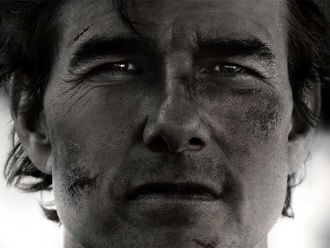Language is a weapon of war and of the after-war. It is ammunition for making history and for writing it. This is why governments and their challengers fight over the name of things. This is why it matters whether a stretch of concrete and barbed wire running through Occupied Territories is called a fence or a wall or a border. And it is the root of the argument over whether the slaughter of thousands of Armenians at the start of the 20th century was a massacre or genocide.
Rene Backmann, foreign affairs columnist for Le Nouvel Observateur, makes his position clear in the title of A Wall in Palestine. Rooted in an impressive array of maps, facts and frank discussions, it is worthwhile reading even for those who don't agree with its conclusions: that a wall in a place called Palestine, even if driven in part by the legitimate need for security, also functions as land grab and de facto border.
The wall has severed Palestinian communities and families that found themselves on opposite sides of the wall. It has disrupted farming and development of the Palestinian economy.
Palestinians must obtain permits to cross the wall and to travel on Israeli-built roads through the occupied West Bank.
Like the roads and Israeli colonies, the wall serves to make a contiguous Palestinian state all but impossible. The wall, Backmann argues, is part of a system of strategically placed colonies, roads and checkpoints that both protect Israel and lay claim to Palestinian territory. The colonies annex West Bank land while the wall protects the colonies and marries the land to Israel, along with occupied Jerusalem.
Against construction of wall
In July 2004, the International Court of The Hague determined that "construction of the wall being built by Israel, the occupying Power, in the Occupied Palestinian Territories including in and around [occupied] East Jerusalem" was contrary to international law and called for its dismantling, with reparations.
Perhaps the decision, along with Palestinian court challenges, has contributed to a slowdown in construction. Or perhaps, as Blackmann suggests, the Israelis intend to use the wall as a bargaining chip in final status negotiations. Call it what you will, that is one big chip.
Of course, it is not just what you call a thing but the story you chose to tell. In Rebel Land: Unraveling the Riddle of History in a Turkish Town, Christopher de Bellaigue, a former correspondent for The Economist, mines histories of the centuries-old conflict among Turks, Armenians and Kurds that omit the grievances of any other side, distorting their heroes and rights, indeed their very identity.
Because many of the official documents of Turkish history are locked away by the state, De Bellaigue focused on the remote district of Varto in mountainous southeastern Turkey, a kind of ground zero of the country's ethnic conflicts that had been caught up in both the massacres of 1915 and the Kurdish rebellion of 1925.
This is rough terrain, shaped by coups and earthquakes and controlled in turn during the 20th century by Ottomans, Russians, Armenians and Kurds. It has produced many rebels and not a few turncoats among its multifaceted population.
De Bellaigue tries to humanise them, offering a close-up look at their faces and foods and bloodied landscape, where bodies are set alight, pierced by bayonets and boiled in cauldrons.
Presented with multiple versions of a single event, De Bellaigue sometimes became convinced that all sides were lying.
The common trait among these competing stories is that they present their own suffering in great detail while failing to mention their crimes. This, De Bellaigue shows us, is the enriched verbal uranium that fuels these conflicts to this day.
Nearly 100 years later, the sides are caught in an absurd battle over the word "genocide" that is "a travesty of history and memory".
What is needed, he says, is a new word, even as he dismisses such a fantasy as "the prattle of a naïf, laughable, unemployable".








